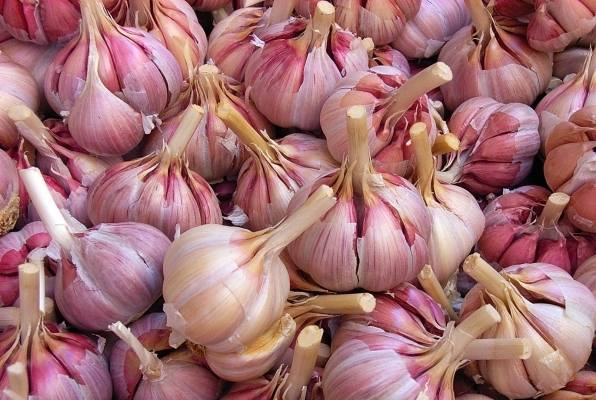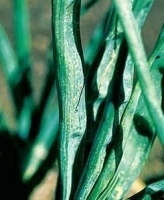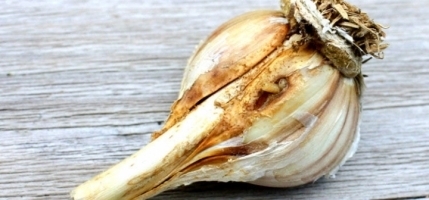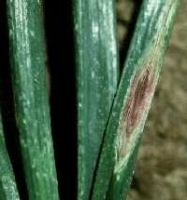Yamuna Safed (G-1): Bulbs are compact with silvery white appearance. Cloves are of sickle shape with 25-30 cloves per bulb.
Yamuna Safed 2(G-50): Bulbs are compact with attractive white creamy flesh contain 35-40 cloves per bulb.
Yamuna Safed 3 (G 282): Bulbs are creamy white and bigger in size. 15-16 numbers of cloves are per bulb.
G 40: Cloves are of fresh white color and gives average yield of 50-60qtl/acre.
Agrifound White (G-41): Ready to harvest in 150-190days. Gives average yield of 52-56qtl/acre.
Agrifound Parvati (G 313): Ready to harvest in 250-270days. Gives average yield of 70-80qtl/acre. 70-80qtl/acre.
Yamuna Safed 4 (G 323): Bulbs are silvery white and contain number of cloves 20-25 per bulb.
Godavari (Selection 2) : Ready to harvest in 140-145days after sowing. Gives average yield of 40-42qtl/acre
Sweta (Selection 10): cloves are bright silver white color. Ready to harvest in 130-135days. Gives average yield of 40-42qtl/acre.
T 56-4: Gives average yield of 32 to 40qtl/acre.
Other state varieties:
Bhima Omkar: Ready to harvest in 120-135 days. It produces medium size white color bulbs. Gives average yield of 32-56qtl/acre.
Yamuna Safed 5 (G -189): Ready to harvest in 150-160days and gives average yield of 50-60qtl/acre.
Bhima Purple: Ready to harvest in 120-135 days. Bulbs are having attractive purple color. Gives average yield of 24-28qtl/acre.
VL Garlic 1: Bulbs are of whitish color. It is ready to harvest in 180-190 days. Gives average yield of 56-60qtl/acre in hills and 36-40qtl/acre in plains.
Solan Selection: Small cloves and 12-15 cloves in each bulb. It gives an average yield of 62.5-80qtl/acre.
Selection-1: Medium white color cloves, same size and is more attractive than other varieties. It is suitable for sowing in low and intermediate hilly areas. It gives an average yield of 80-105qtl/acre.
G.H.C-1: It gives more yield than other varieties and is aromatic. It has large size cloves which are easy to peel. It gives an average yield of 84-105qtl/acre.






















